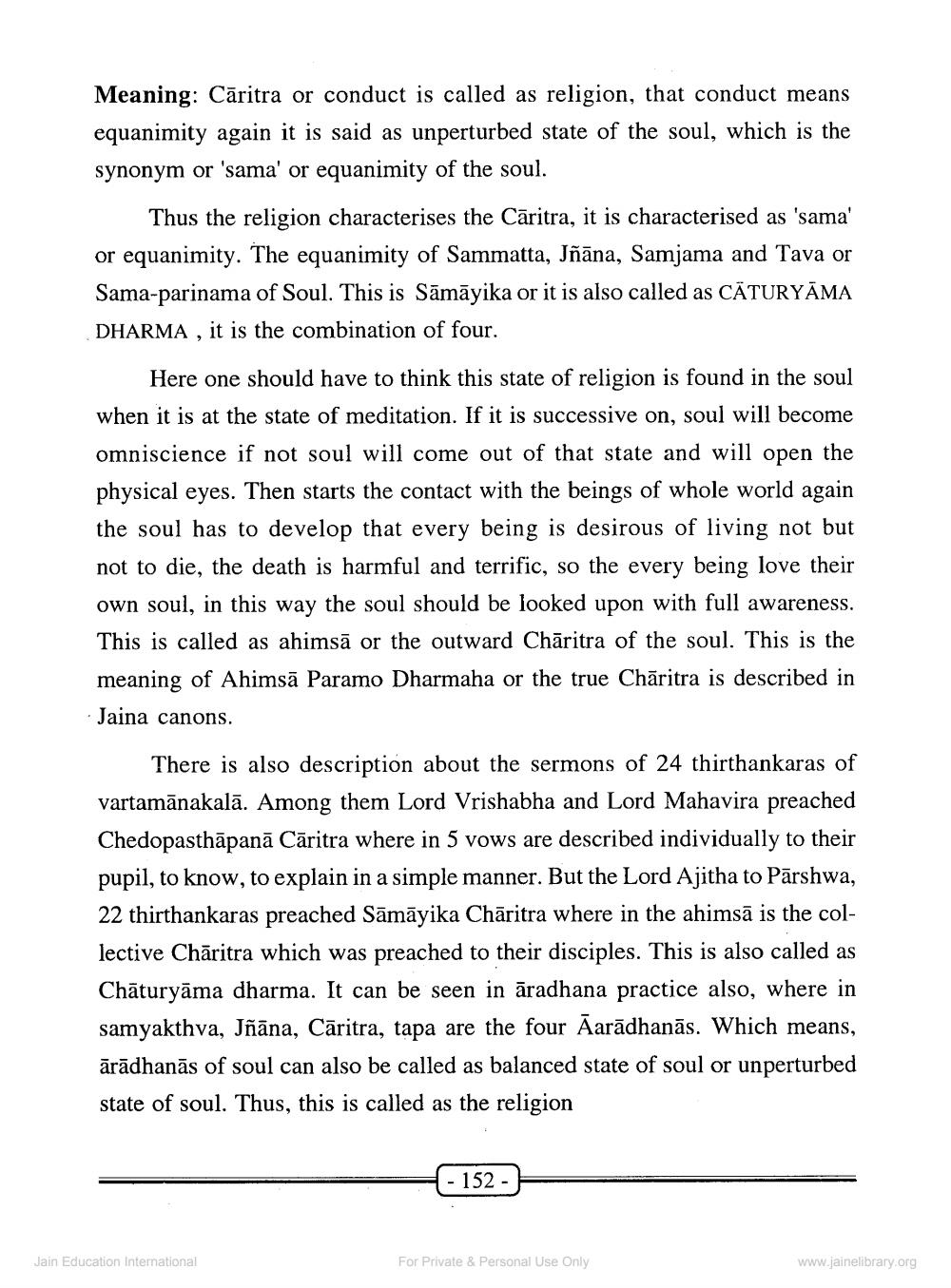________________
Meaning: Cāritra or conduct is called as religion, that conduct means equanimity again it is said as unperturbed state of the soul, which is the synonym or 'sama' or equanimity of the soul.
Thus the religion characterises the Cāritra, it is characterised as 'sama' or equanimity. The equanimity of Sammatta, Jñāna, Samjama and Tava or Sama-parinama of Soul. This is Sāmāyika or it is also called as CÃTURYĀMA DHARMA , it is the combination of four.
Here one should have to think this state of religion is found in the soul when it is at the state of meditation. If it is successive on, soul will become omniscience if not soul will come out of that state and will open the physical eyes. Then starts the contact with the beings of whole world again the soul has to develop that every being is desirous of living not but not to die, the death is harmful and terrific, so the every being love their own soul, in this way the soul should be looked upon with full awareness. This is called as ahimsā or the outward Chāritra of the soul. This is the meaning of Ahimsā Paramo Dharmaha or the true Chāritra is described in Jaina canons.
There is also description about the sermons of 24 thirthankaras of vartamānakalā. Among them Lord Vrishabha and Lord Mahavira preached Chedopasthāpanā Cāritra where in 5 vows are described individually to their pupil, to know, to explain in a simple manner. But the Lord Ajitha to Pārshwa, 22 thirthankaras preached Sāmāyika Chāritra where in the ahimsā is the collective Chāritra which was preached to their disciples. This is also called as Chāturyāma dharma. It can be seen in aradhana practice also, where in samyakthva, Jñāna, Cāritra, tapa are the four Aarādhanās. Which means, ārādhanās of soul can also be called as balanced state of soul or unperturbed state of soul. Thus, this is called as the religion
- 152 -
Jain Education International
For Private & Personal Use Only
www.jainelibrary.org




